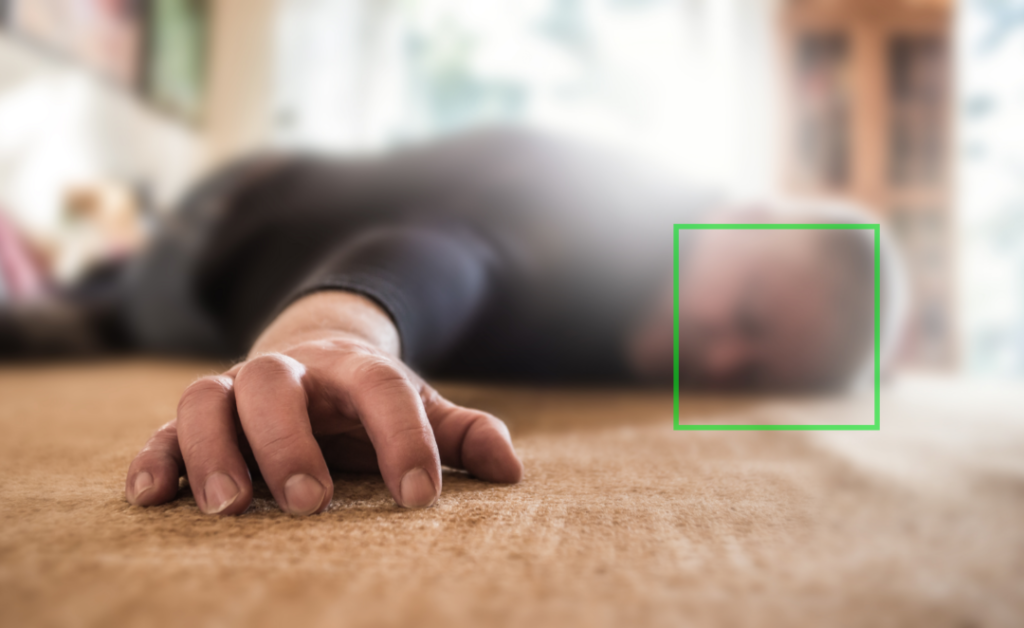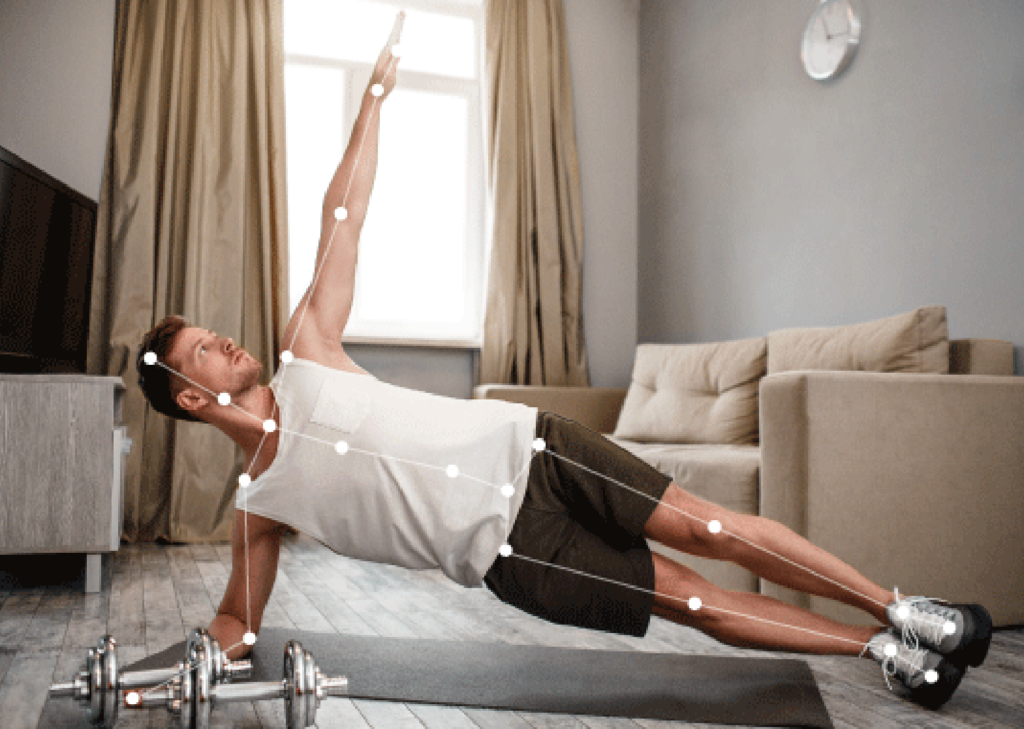Solving Challenges with 3D Motion Recognition
In various industries, the accurate recognition and analysis of movement patterns in three-dimensional space is becoming increasingly crucial. 3D Motion Recognition, also known as 3D Movement Recognition, offers a transformative solution to address a wide range of challenges in both human-centric and industrial applications. In this article, we will explore the power of 3D Motion Recognition and its ability to revolutionize various domains.
Improving Human-centric Functions and Movements
Healthcare and Rehabilitation
In healthcare, 3D Motion Recognition (Movement Recognition) plays a vital role in enhancing patient care and safety. By accurately estimating human pose through key points, healthcare professionals can monitor patient movements, detect dangerous situations such as falls, and analyze illness-related motions. This technology offers valuable insights for clinical activities, enabling healthcare providers to optimize workflows and improve treatment outcomes.
Fitness and Sport
3D Motion Recognition is also beneficial in fitness applications. It enables the recognition and analysis of physical exercises and movements, allowing individuals to receive personalized insights and guidance. By measuring more features using 3D data, this solution provides a more comprehensive assessment than traditional methods, ensuring correct posture and minimizing the risk of injuries.
Virtual Reality and Gaming
The integration of 3D Motion Recognition with virtual reality (VR) and gaming opens up exciting possibilities. By utilizing Microsoft Azure Kinect 3D cameras, markerless motion capture can be achieved. Real-world objects can be analyzed, and their movements can be replicated in the form of 3D models, enriching the immersive experience in the metaverse, gaming, and VR scenarios.
Industrial Applications
Human-Machine Collaboration
In industrial settings where humans and machines work together, 3D Motion Recognition proves invaluable. By precisely detecting and tracking the movements of people, potential risks can be identified, workflows can be optimized, and accidents and errors can be prevented. This technology ensures a safer and more efficient collaboration between human workers and machines.
Workflow Optimization
By leveraging the technology, businesses can gain insights into the movements of employees within different environments. Analyzing these movements enables organizations to identify bottlenecks, streamline processes, and enhance overall productivity. The data collected through this technology can be used to optimize workflows, reduce operational costs, and improve the overall efficiency of industrial operations.
As industries strive for greater efficiency, safety, and productivity, the adoption of 3D Movement Recognition solutions is on the rise. By accurately recognizing and analyzing movements in three-dimensional space, businesses can unlock valuable insights, optimize processes, and improve outcomes in both human-centric and industrial domains. Whether in healthcare, fitness, virtual reality, or industrial settings, the transformative power of 3D Movement Recognition is paving the way for a future of enhanced performance and safety.
How Does 3D Movement Recognition Work?
3D movement recognition is an advanced technology that allows for precise tracking and analysis of human motion. It works on the principles of human motion tracking, using advanced 3D pose estimation software and motion-type classification algorithms to capture and analyze movements in three dimensions.
The basis of this technology is the accurate estimation of the position of human key points (knees, elbows, shoulders, etc.) in 3D. There are several different techniques for estimating human pose, depending on the type and number of cameras used in the solution.
A minimalist approach in terms of the number of devices is to use one camera that has the ability to record depth images. Thanks to this, information about the distance from the camera of the recorded objects is obtained, and dedicated artificial intelligence models return information about the location of key points in three dimensions. However, this solution is burdened with a certain error due to the fact that the model is not able to estimate the location of body parts not visible in the camera view.
This issue does not occur when the approach is based on multiple camera views. By registering the image from different sides, the problem of occlusions is eliminated. This solution requires calibration of all devices to be able to identify the same points visible from different cameras, and thus create a 3D scene. An additional advantage of this approach is that there is no need to use depth-recording cameras because the entire solution is based on color images. Pose estimation in this case can be performed using the triangulation method. This means that the 2D pose estimation is performed on each view separately, and then, thanks to the calibration data, a 3D pose is generated combining information from all 2D poses. Another possibility is the use of special neural networks that, based on calibration data and views from several cameras, return the human pose directly in 3D.
After obtaining information about the location of key points in time, algorithms are used to analyze this data. These can be simple mathematical algorithms interpreting the position of key points in relation to each other and on this basis classifying a given movement or recognizing errors. Another approach is to use neural networks, that learn during the training which features are crucial to correctly identify movement.
Use Cases

The technology empowers healthcare professionals to respond to dangerous situations for patients in a completely innovative way. By capturing and analyzing real-time video of patients’ movements, this cutting-edge technology allows for the early identification of potential risks, thereby minimizing the likelihood of adverse events.
How it works:
- Real-time Monitoring: The system captures video footage of the patient’s movements in real-time, utilizing advanced cameras.
- Behavioral Analysis: State-of-the-art algorithms examine the recorded video, thoroughly assessing the patient’s behavior and movements.
- Risk Identification: Through this analysis, doctors and medical professionals can swiftly identify potentially dangerous situations, ensuring timely intervention.
Benefits:
- Early Risk Detection: By leveraging 3D movement recognition, healthcare providers can identify potential risks at the earliest stages, allowing for proactive interventions.
- Minimized Adverse Events: Prompt identification of dangerous situations reduces the risk of adverse events for patients, enhancing their overall safety and well-being.
- Timely Response: The ability to swiftly identify potential risks enables medical professionals to react promptly, preventing or mitigating harm.
Analyzing Clinical Activities

In the context of healthcare, technology offers valuable insights into optimizing clinical activities, particularly in the operating room. This advanced technology enables the analysis of 3D image and video data, facilitating early risk identification and the development of best practices. By incorporating AI-driven analysis, healthcare professionals can enhance precision, efficiency, and ultimately improve patient outcomes in the operating room.
How it works:
- 3D Image and Video Data Analysis: State-of-the-art algorithms analyze 3D image and video data captured in the operating room.
- Risk Identification: By examining the data, potential risks and challenges can be identified early on, allowing for proactive measures.
- Best Practice Development: The insights gained from the analysis of clinical activities contribute to the development of improved protocols and procedures, enhancing overall operational efficiency.
Benefits:
- Early Risk Detection: Through 3D movement recognition, healthcare professionals can identify potential risks in the operating room at an early stage, enabling timely interventions.
- Precision and Efficiency: By incorporating AI analysis, the operating room can benefit from enhanced precision and efficiency, leading to improved patient outcomes.
- Best Practices: The analysis of clinical activities using 3D movement recognition helps in developing and refining best practices, ensuring optimal performance and patient care.
Digital Personal Trainer

3D movement analysis technology revolutionizes the realm of fitness and training by providing an accurate and efficient digital personal trainer. With the ability to analyze and correct physical exercises and movements, this advanced method enhances the effectiveness of training sessions while minimizing the risk of injuries. Through the recording and analysis of body movements in three dimensions, errors in exercise execution can be detected and corrected, leading to improved physical performance.
How it works:
- 3D Movement Recording: The system records the movement of the body during exercise sessions using advanced cameras and sensors.
- Analysis and Error Detection: State-of-the-art algorithms analyze recorded data, identifying errors or deviations in exercise execution.
- Personalized Correction: Based on the analysis, the digital personal trainer provides customized feedback and guidance to correct exercise techniques, optimizing training effectiveness.
Benefits:
- Enhanced Training Effectiveness: 3D movement analysis ensures accurate assessment and correction of exercise techniques, maximizing the efficiency of training sessions.
- Injury Prevention: By identifying and correcting errors in exercise execution, the risk of injuries is minimized, promoting long-term fitness and well-being.
- Personalized Guidance: The digital personal trainer provides individualized feedback, addressing specific areas for improvement and tailoring training programs to the user’s needs.
Revolutionizing Digital Transformation with 3D Motion Recognition
theBlue.ai GmbH, based in Hamburg, is a leading provider specializing in scalable deep tech and AI solutions. With expertise in Artificial Intelligence, Machine Learning, and Deep Learning, our mission is to drive our client’s success with our world-class team.
Unleashing the Power of AI: We offer cutting-edge 3D movement recognition technology, empowering industries to harness the potential of motion analysis in three dimensions. From healthcare to fitness and industrial applications, our solution enables precise movement capture and analysis, revolutionizing processes and enhancing outcomes.
If you’re interested in harnessing the benefits of 3D Motion Recognition for your organization, reach out to us to explore how this cutting-edge technology can be customized to meet your specific needs.





